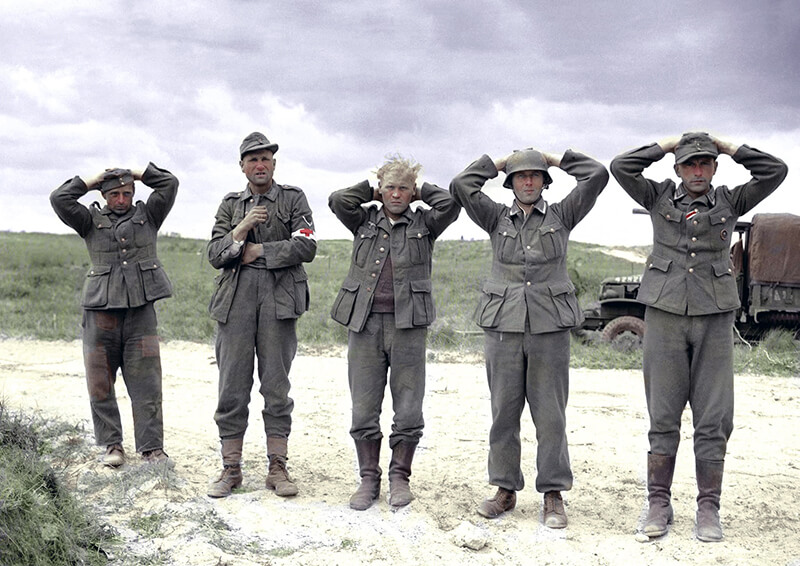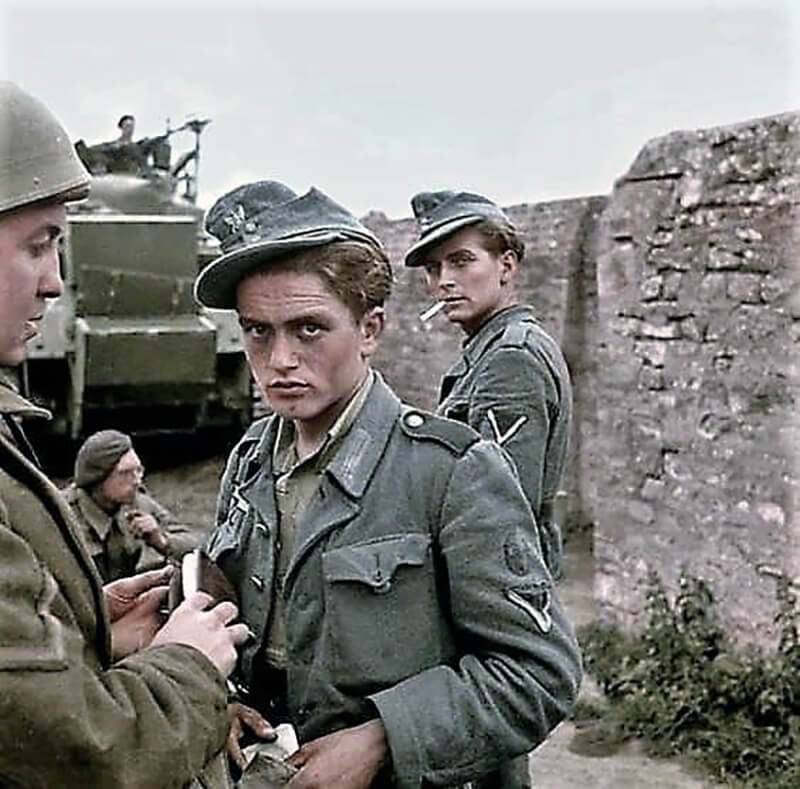| Page Created |
| November 14th, 2023 |
| Last Updated |
| June 22nd, 2024 |
| United States |
 |
| Included Operations |
| – |
| Operational Areas |
| Special Air Service 6th Airborne Division Band Beach Sword Beach Gold Beach Juno Beach Omaha Beach Utah Beach 82nd Airborne Division 101st Airborne Division |
| Operations within Operation Overlord |
| Operation Gambit Operation Neptune Operation Perch Operation Epsom Operation Charnwood Operation Atlantic Operation Goodwood Operation Bluecoat Operation Totalize |
| June 6th, 1944 |
| Utah Beach |
| Objectives |
- Establish a beachhead in the area from Saint-Germain-de-Varreville to Saint-Côme-du-Mont, in La Manche.
- Link up with the 82nd Airborne Division.
- Link up with the 101st Airborne Division.
- Capture Cherbourg in the shortest possible time.
| Operational Area |
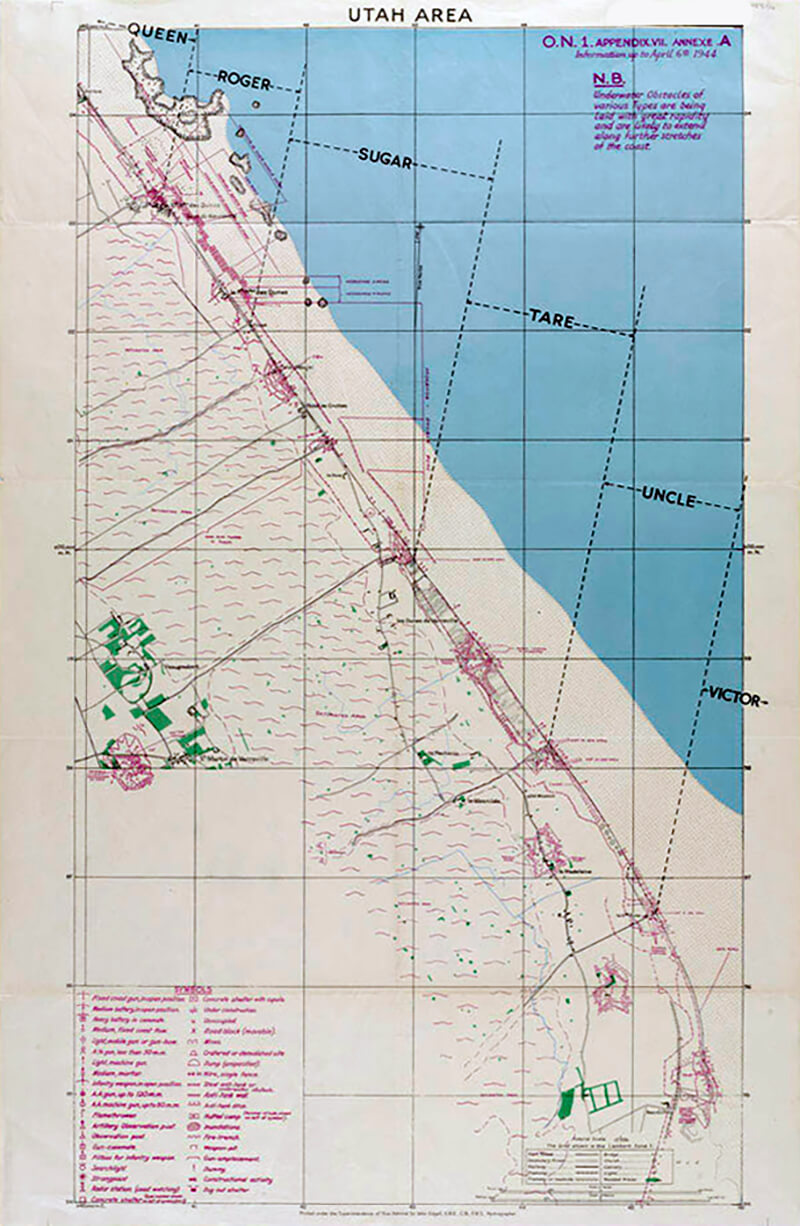
Area from Saint-Germain-de-Varreville to Saint-Côme-du-Mont, in La Manche, Normandy, France.
| Unit Force |
| 4th Infantry Division |
- 8th Infantry Regiment
- 1st Battalion, 8th Infantry Regiment
- 2nd Battalion, 8th Infantry Regiment
- 3rd Battalion, 8th Infantry Regiment
- 12th Infantry Regiment
- 1st Battalion, 12th Infantry Regiment
- 2nd Battalion, 12th Infantry Regiment
- 3rd Battalion, 12th Infantry Regiment
- 22nd Infantry Regiment
- 1st Battalion, 22nd Infantry Regiment
- 2nd Battalion, 22nd Infantry Regiment
- 3rd Battalion, 22nd Infantry Regiment
| Divisional Troops |
- 4th Division Reconnaissance Unit
- 4th Division Artillery
- 29th Field Artillery Battalion
- 42th Field Artillery Battalion
- 44th Field Artillery Battalion
- 20th Field Artillery Battalion
- 87th Mortars Battalion
- 65th Field Artillery Tank Battalion
- 4th Division Maintenance Company
- 4th Division Quartermaster Company
- 4th Division Signal Company
- 4th Division Military Police Platoon
- 4th Division Medical Battalion
| Attached Units Assault Phase Command |
- 1st Special Engineer Brigade
- 4th Combat Engineer Battalion
- 49th Combat Engineer Battalion
- 237th Combat Engineer Battalion
- B Company
- 299th Combat Engineer Battalion
- B Company
- 531ème Regiment Génie de Marine
- 1re Batallion, 531ème Regiment Génie de Marine
- 2ème Batallion, 531ème Regiment Génie de Marine
- 6th Tank Group
- 70th Tank Battalion
- 746th Tank Battalion
- 899th Tank Destroyer Battalion
- 359th Infantry Regiment
- 1st Battalion, 359th Infantry Regiment
- 2nd Battalion, 359th Infantry Regiment
- 915th Field Artillery Battalion
- 13th Field Artillery Observation Battalion
- 980th Field Artillery Battalion
- B Battery
- 11th Anti-Aircraft Group
- 474th Anti-Aircraft Artillery Automatic Weapons (Self-Propelled) Battalion
- 320th Anti-Aircraft Barrage Balloon Ba
- C Battery
| Attached Support Units Assault Phase Command |
| Opposing Forces |
- 709. Infantrie-Division
- 919. Grenadier-Regiment
- 2 Bataillons
- 919. Grenadier-Regiment
- 91. Luftlande-Infanterie-Division
- 17. SS-Panzergrenadier-Division
| Operation |
Utah Beach, the westernmost of the main landing zones, faces northeast and is bordered by sandhills on the eastern coast of the Cotentin Peninsula. Force U, for the Utah sector, was destined to arrive in the area which runs from Saint-Germain-de-Varreville to Saint-Côme-du-Mont, in La Manche. This area is adjacent to marshlands that the Germans have intentionally flooded, and only four causeways provide access across these marshes to reach the inland areas.
The coastline is fortified with various artificial defences, including rows of obstacles on the beach. These obstacles consist of piles or posts angled toward the sea, steel hedgehogs, barbed wire entanglements, “C” elements, and Belgian gates (Cointet elements).
Behind the beach, along a masonry wall, the defensive system is reinforced with blockhouses, armored turrets, “Tobruk” pits, trenches, and underground bunkers. These structures are interconnected by a network of trenches and further protected by iron barbed wire, minefields, and anti-tank ditches.
The Cotentin Peninsula falls within the German VII Army’s defence zone, which is managed by the 709. Infantrie Division, 243. Infantrie Division, and the 91. Infantrie Division.
The troops intended for Utah Beach also known as Force U are docked in Plymouth, England. The VII Corps is to attack Utah Beach on D-Day at H-Hour and will storm Cherbourg in the shortest possible time.
The 4th Infantry Division is tasked with attacking Utah Beach at H-Hour to establish a landing zone. They will then advance toward Cherbourg, coordinating with the 90th Infantry Division, which is scheduled to land on D-Day + 1. Additionally, the 82nd and 101st Airborne Divisions have specific objectives to support these efforts.
| The Attack |
At 04:30, elements of the 4th and 24th Cavalry Squadrons reach the Saint-Marcouf Islands, facing Utah Beach, to seize what is believed to be an advanced post or small fort. By 05:30, these elements land and occupy the deserted islands.
Meanwhile, the transfer of troops into Landing Craft Personnel proceeds safely, and the first wave arrives at the designated departure line on schedule.
At almost H-Hour, the ships lower their ramps, and six hundred men plunge into the water to reach the beach. These initial troops are from the 1st and 2nd Battalions of the 8th Infantry Regiment. However, they do not land at the planned location but instead 1,800 metres south.
Brigadier General Theodore Roosevelt Jr., part of the first wave, notices this error. Recognising the terrain, he decides that the subsequent assault waves should land at the same place.
While engineers prepare the beaches for the arrival of more troops, the 1st and 2nd Battalions of the 8th Infantry Regiment begin their missions and move inland toward their objectives. The 1st Battalion advances north towards the Dunes-de-Varreville, the 3rd Battalion moves west, and the 2nd Battalion links up with paratroopers of the 101st Division at Pouppeville around 12:00.
One major consequence of the landing error is the overcrowding at Exit 2. The original plan calls for the use of Exits 2 and 3 to manage the flow of men and equipment, but the proximity of German defenses to the north prevents the use of Exit 3. The three battalions of the 22nd Infantry Regiment, which land around 10:00 hours, have to progress through the flooded zone to reach their objectives in the northwest, towards St-Germain-de-Varreville.
Later that day, units of the 82nd Airborne Division, having landed by sea, follow the 3rd Battalion of the 8th Infantry Regiment. Their task is to join the 82nd Airborne Division at Sainte-Mère-Église and clear the area to enable the landing of gliders at 21:00.
The 8th Infantry Regiment reaches its objectives on D-Day. They relieve the paratroopers of the 101st Airborne in the Pouppeville area and position themselves to protect the division from the southwest. However, a German pocket of resistance to the north of “Les Forges,” where the gliders are scheduled to land, poses a problem. The two other regiments of the 4th Infantry Division do not reach their objectives, primarily due to the flooded zone, which delays them throughout the day.
The entire 4th Infantry Division lands within the first 15 hours of D-Day. The division suffers 197 casualties during the day, and by the night of June 6th, 1944, 20,000 men and 1,700 vehicles are on Utah Beach.
| Multimedia |
| German Defences |
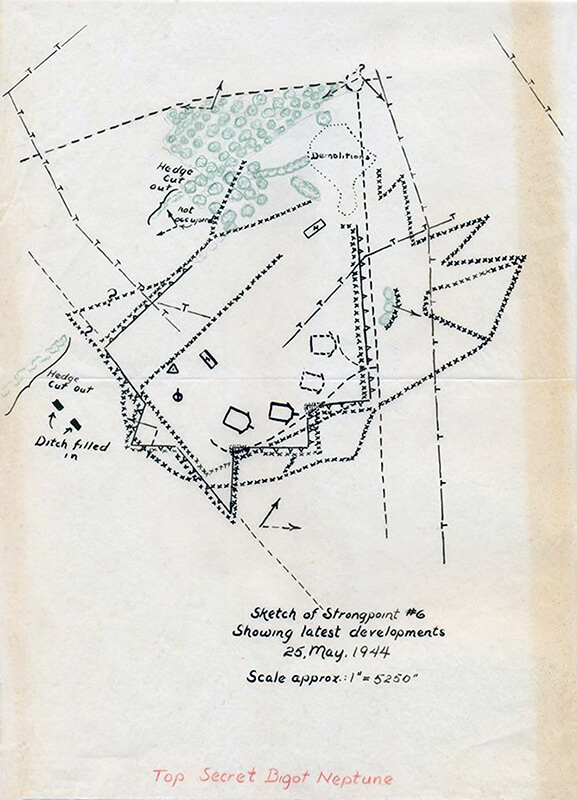
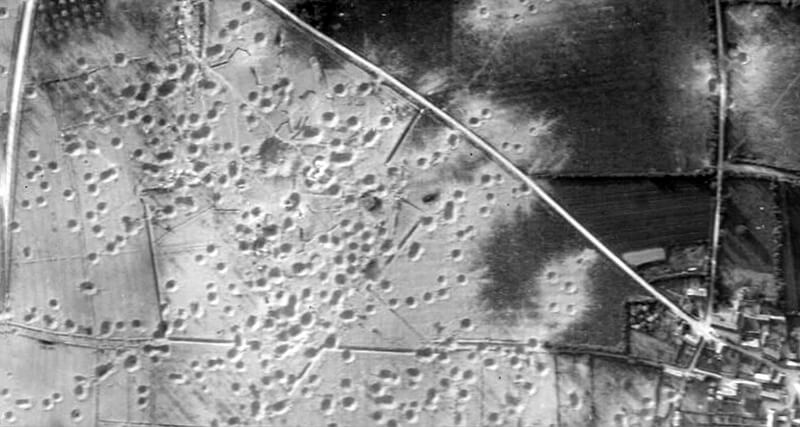
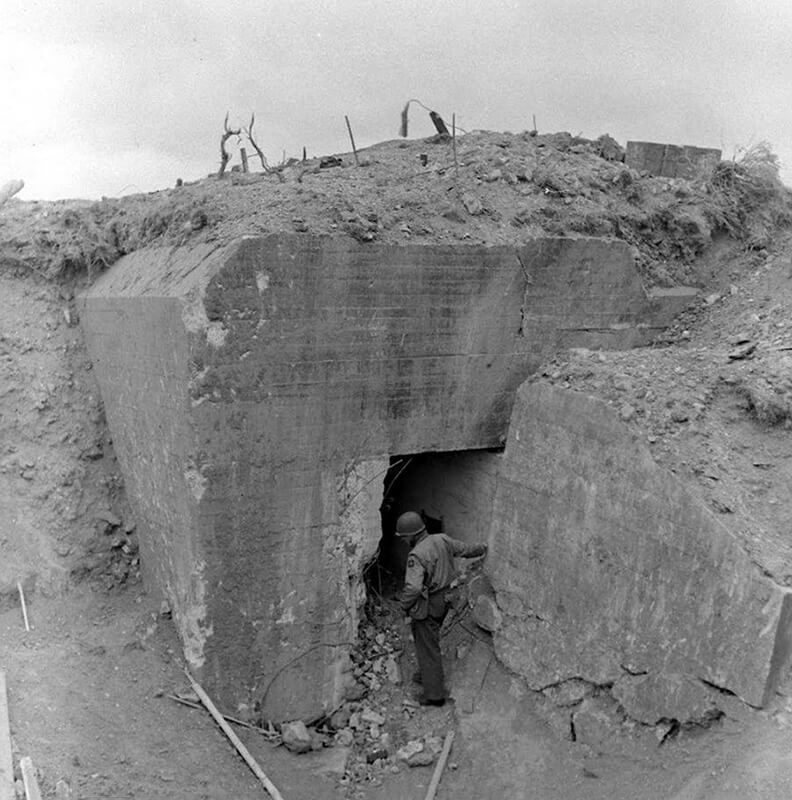
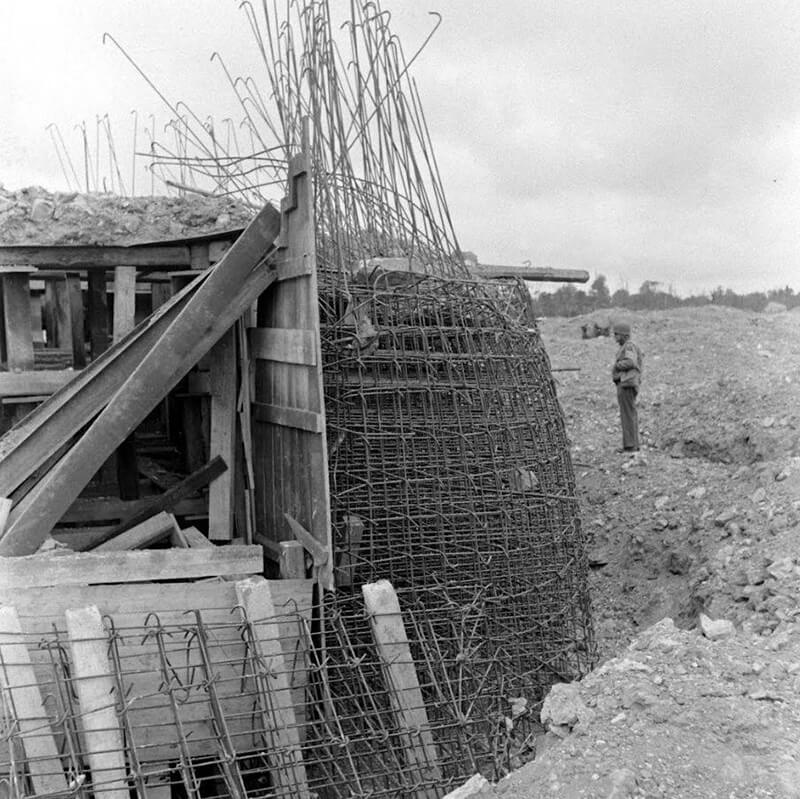
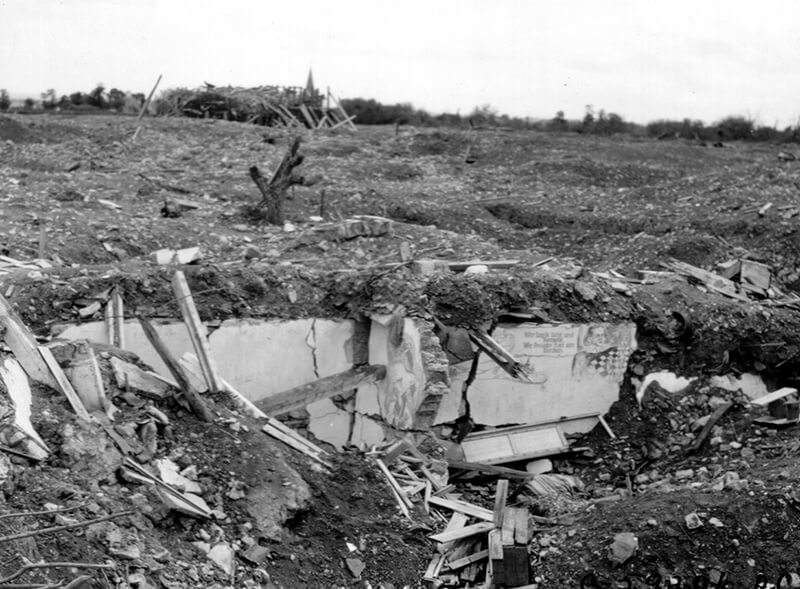
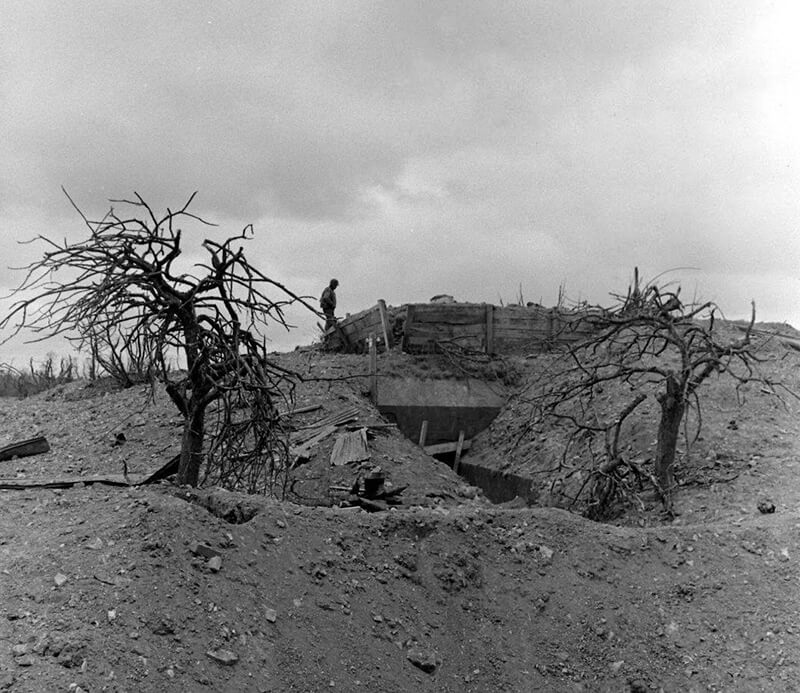
Heeres-Küsten-Batterie 1./1261 at the place called La Croix aux Berlots.
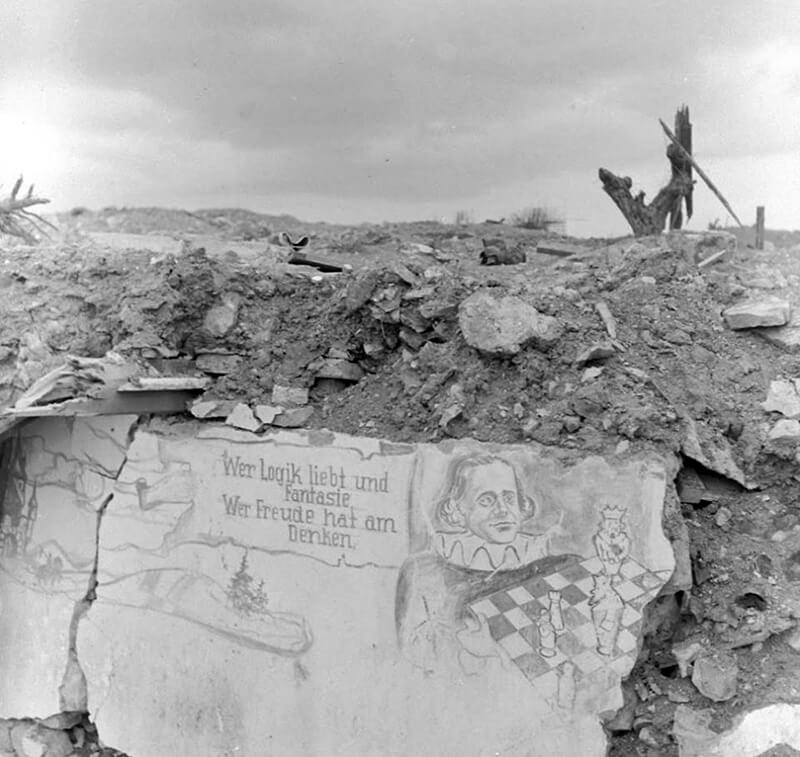
Heeres-Küsten-Batterie 1./1261
“Wer Logik liebt und Fantasie, wer Freude hat am Denken”
This text is the beginning of a motto of chess players, the complete text being:
“Wer Logik liebt und Fantasie, wer Freude hat am Denken, der soll zu einer Schachpartie die Schritte zu uns lenken.”
This motto is said to belong to the chess association of Düsseldorf-Holthausen, created in 1933 on the occasion.
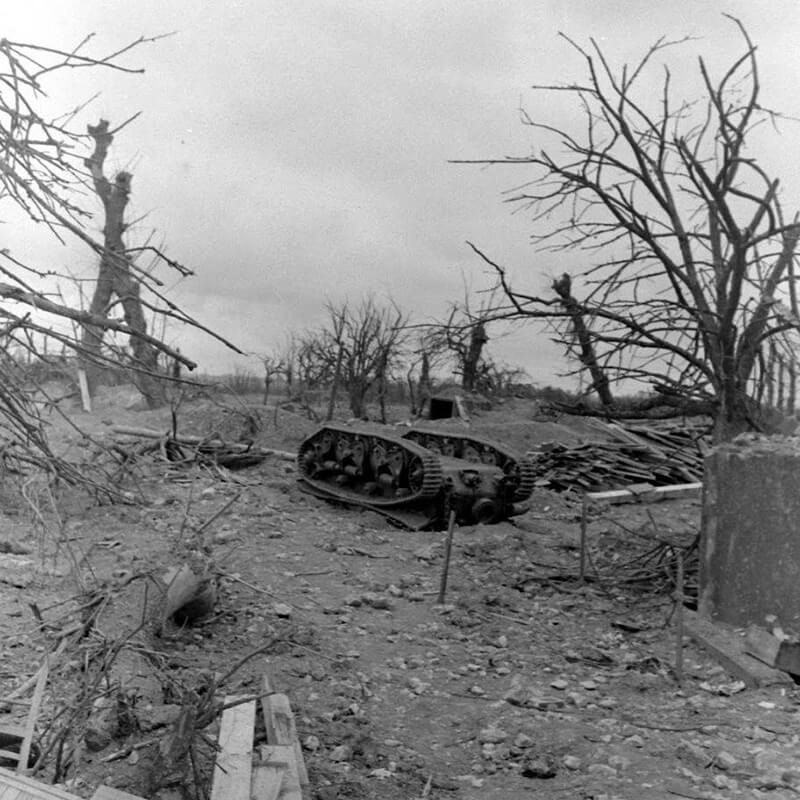
Heeres-Küsten-Batterie 1./1261
The overturned armored vehicle is an adaptation of the French Renault R 35 tank, specifically the version without a turret used by the Germans as an artillery tractor “Mörserzugmittel”. The tank was destroyed during a bombing while it was supposed to be used to withdraw the cannons.
| Landing |
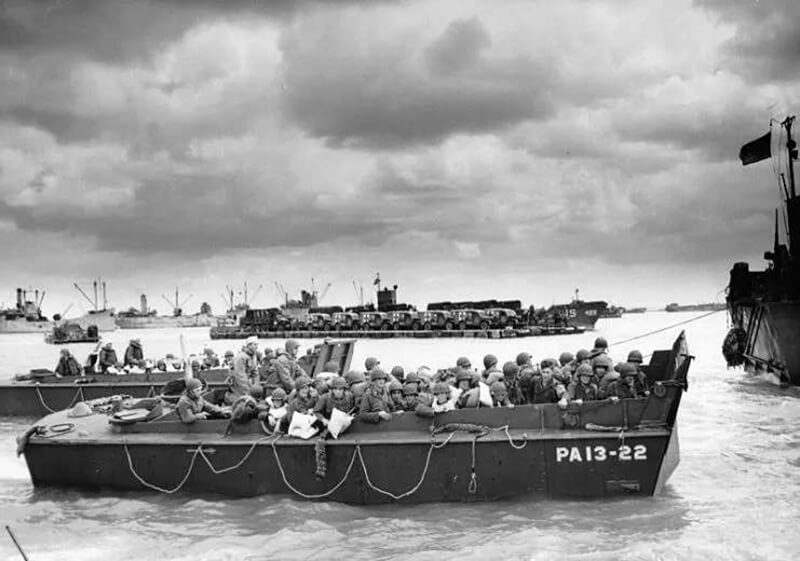
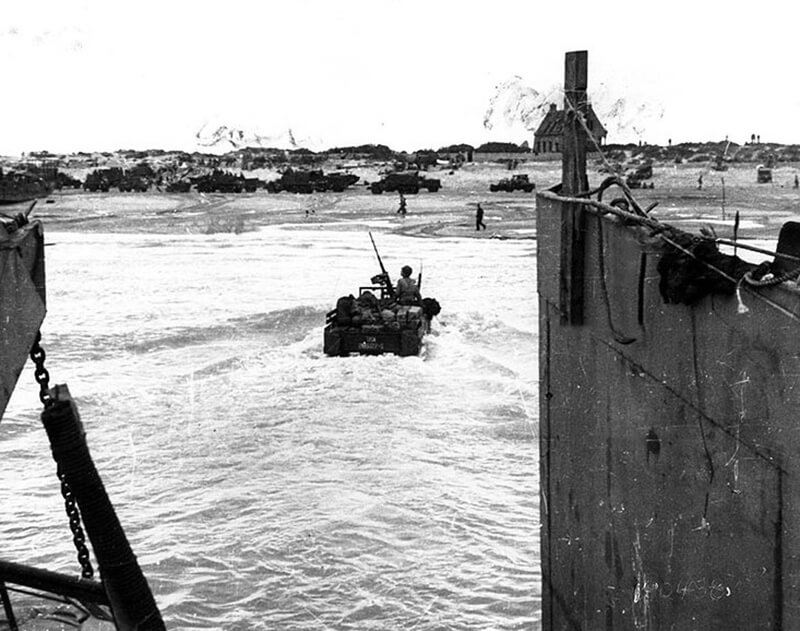
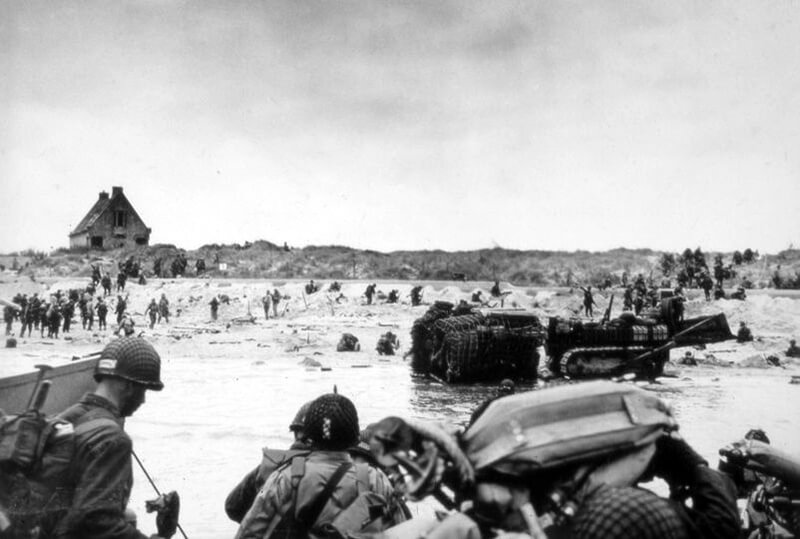
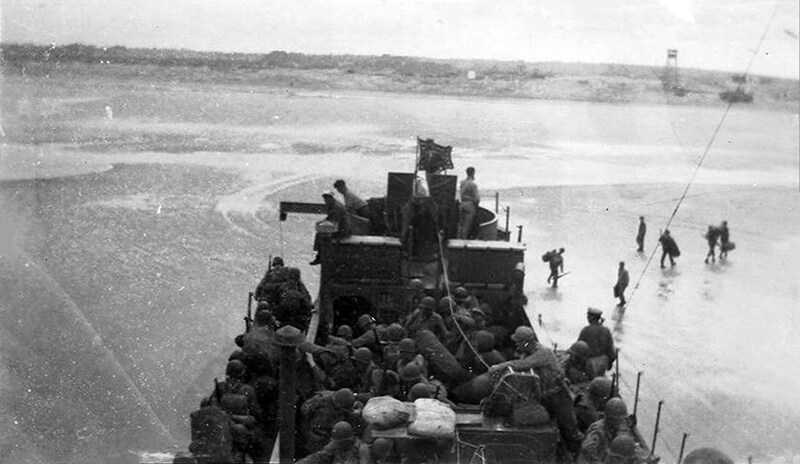
| Beach |
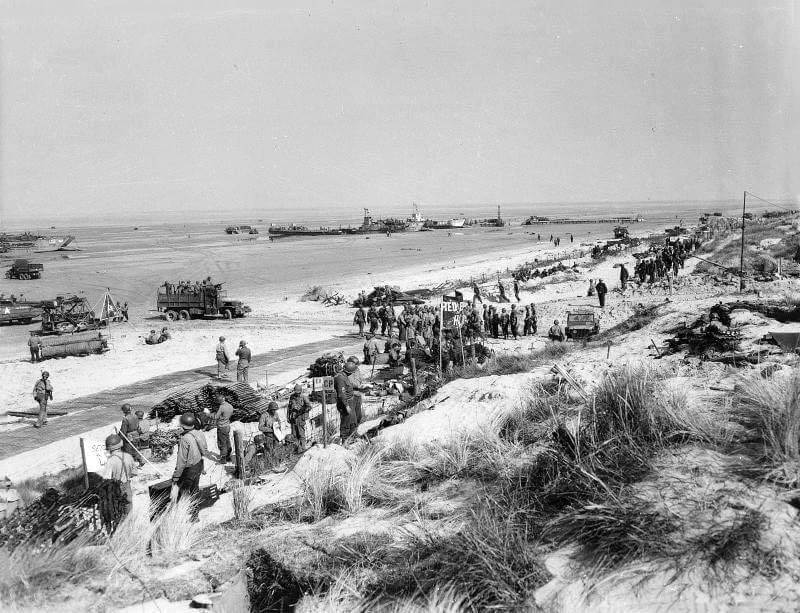
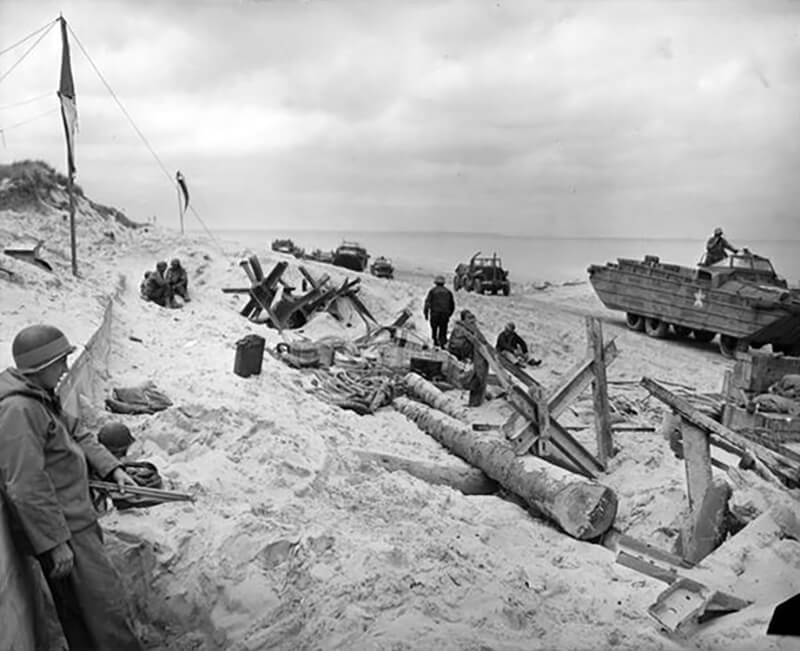
| Prisoners of War |
